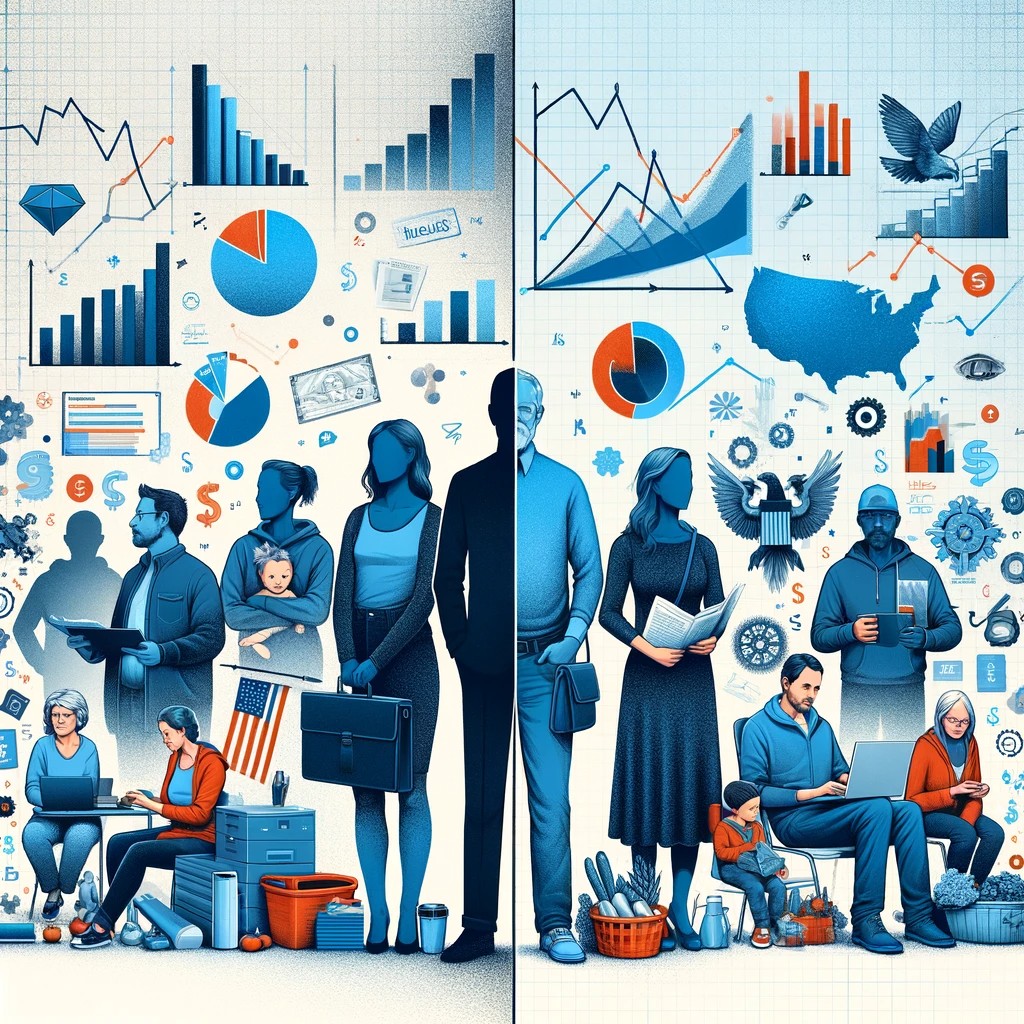Amidst the complex web of economic data and expert analysis, a glaring rift emerges between the perspectives of economists and the everyday experiences of Americans. While recent figures paint a somewhat optimistic picture of America’s economic landscape, the ground reality experienced by the average citizen often tells a different story. It’s a classic case of numbers versus narratives, where statistical upticks clash with personal downturns.
Understanding the Nuances of Economic Data
Let’s delve into the numbers. A recent Pew Research Center survey reveals that 28% of Americans now view the economy positively, up from 19% last year. However, this optimism pales in comparison to the pre-pandemic era when over half of the population held a favorable economic outlook. Despite these improved sentiments, a general air of pessimism about America’s financial health persists.
The job market shows promising signs, with more young adults in full-time employment than in 1993, and a notable dip in weekly jobless claims. However, Kyle K. Moore of the Economic Policy Institute cautions against overly optimistic interpretations. America’s economic improvements are set against decades of sluggish wage growth, widening inequality, and misdirected public investment, which have turned healthcare and education into sources of financial strain rather than relief. The stimulus-driven recovery from the recession hasn’t fully addressed these deep-seated issues. “We’re not economically sick, but we do have chronic conditions needing treatment,” Moore explains.
The Ground Reality: Inflation and Its Impact
Despite falling supermarket prices, many Americans continue to feel the pinch of inflation. The U.S. Bureau of Labor Statistics notes significant year-over-year increases in basic items like frozen vegetables and sugar. Jocelyn Kiley from Pew points out that even with some economic indicators improving, the effects of inflation are still acutely felt across America.
Recent layoffs at major corporations add to this economic anxiety. Significant job cuts announced by companies like Microsoft, Citigroup, Google, and eBay paint a worrying picture for many American workers. Coupled with soaring education and healthcare costs, and a 2023 marked as the least affordable year for home buying, it’s clear why financial concerns remain top of mind for many.
Wage growth, although outpacing inflation recently, still lags behind productivity increases. Since 1979, productivity has surged by nearly 62%, but wages have only risen by about 23%. This discrepancy, Moore notes, is rooted in a weakened labor movement and has particularly affected Black and Hispanic workers, who have seen lesser wage growth compared to their White counterparts.
Amid these challenges, there’s a silver lining. Recent data suggests that inflation may be easing faster than anticipated, creating a unique economic scenario. Lael Brainard, a top White House economic adviser, highlights this as an unprecedented combination of declining inflation, steady economic growth, and stable low unemployment. Yet, the question remains: How does this macroeconomic success translate to the day-to-day realities of Americans?
Consumer spending continues to be robust, with real increases in disposable income and consistent expenditure. This contrasts sharply with early 2023, when strong consumer spending and job gains were offset by higher inflation rates. The current economic climate suggests a possible cooling off of inflation, raising hopes for potential rate cuts in the near future.
So, where does this leave the average American? Caught between the dichotomies of economic data and personal experience, the reality is nuanced. While economists may point to positive trends and potential breakthroughs, many Americans continue to grapple with the tangible impacts of inflation, wage stagnation, and job insecurity. It’s a balancing act between macroeconomic optimism and microeconomic challenges, a gap that continues to define America’s economic narrative.
A Step-By-Step System To Launching Your Web3 Career and Landing High-Paying Crypto Jobs in 90 Days.
